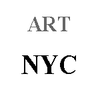A museum of scientists
Author Jeon Chang-rim. Lee Kwang-yeon. Park Kwang-hyuk. Min-Geun
Publishing About Book
2021.03.29.
The battle between lines and colors may have been the fiercest and oldest in the history of painting. Interestingly, there are mathematics and chemistry when you further enter the line and color debate.
Light is an indispensable thing when talking about color. Light has both particle and wave nature in physics. The particles of light, the photons themselves, have no color. The spectrum created by the wave determines the color. The longer the wavelength, the red, and the shorter the wavelength, the blue.
Blue feels like a static and stagnant color, but the spectrum of blue itself is very dynamic. Blue is a color with intense energy due to its high frequency and high vibration.
Mathematics: Golden Ratio, Symmetry, and Perspective Perspective.
A line representation.
Painters Emphasizing Zen: Raffaello, Poussaint, Angie
Chemistry: Pigment, Contrast, Color Farage
color representation.
Painters Emphasizing Color: Titian, Rubens, Delacroix
Art of Light: Stained Glass
The question of how sacred and mysterious the light that expresses God's attributes can be said is contained. Quantum dot technology has already created a variety of colors by mixing the components of metal nanoparticles, such as gold and silver, distributed inside the glass. The light that used to paint God has long harbored a sophisticated nanoscience that will change the future of humanity.
St. Stephen's Church St. Chagall.
Chagall, a ceiling painting of the Paris Opera House, "A Mirror in a Bouquet."
Stained glass at Reims Cathedral, France. Chagall
The term nano first appeared in Feynman's physics lecture titled "There is a rich space on the floor." Feynman first mentioned the properties of matter at the atomic and molecular levels in the lecture before 1986.
The technique of changing the color of glass due to small metal particles can be found in the Likurgos Cup, a work from ancient Rome around the 4th century. It usually appears green, but when the inside of the cup is stung by light, it turns red, a magenta color. The secret of a cup was discovered in the 1990s when microscopes that could observe microscopic nanoparticles were developed—at the British Museum in London.

![[100 Challenge] DanJi’s reading_25](http://artnycnewyork.com/cdn/shop/articles/IMG_2744_1100x.jpg?v=1705707873)